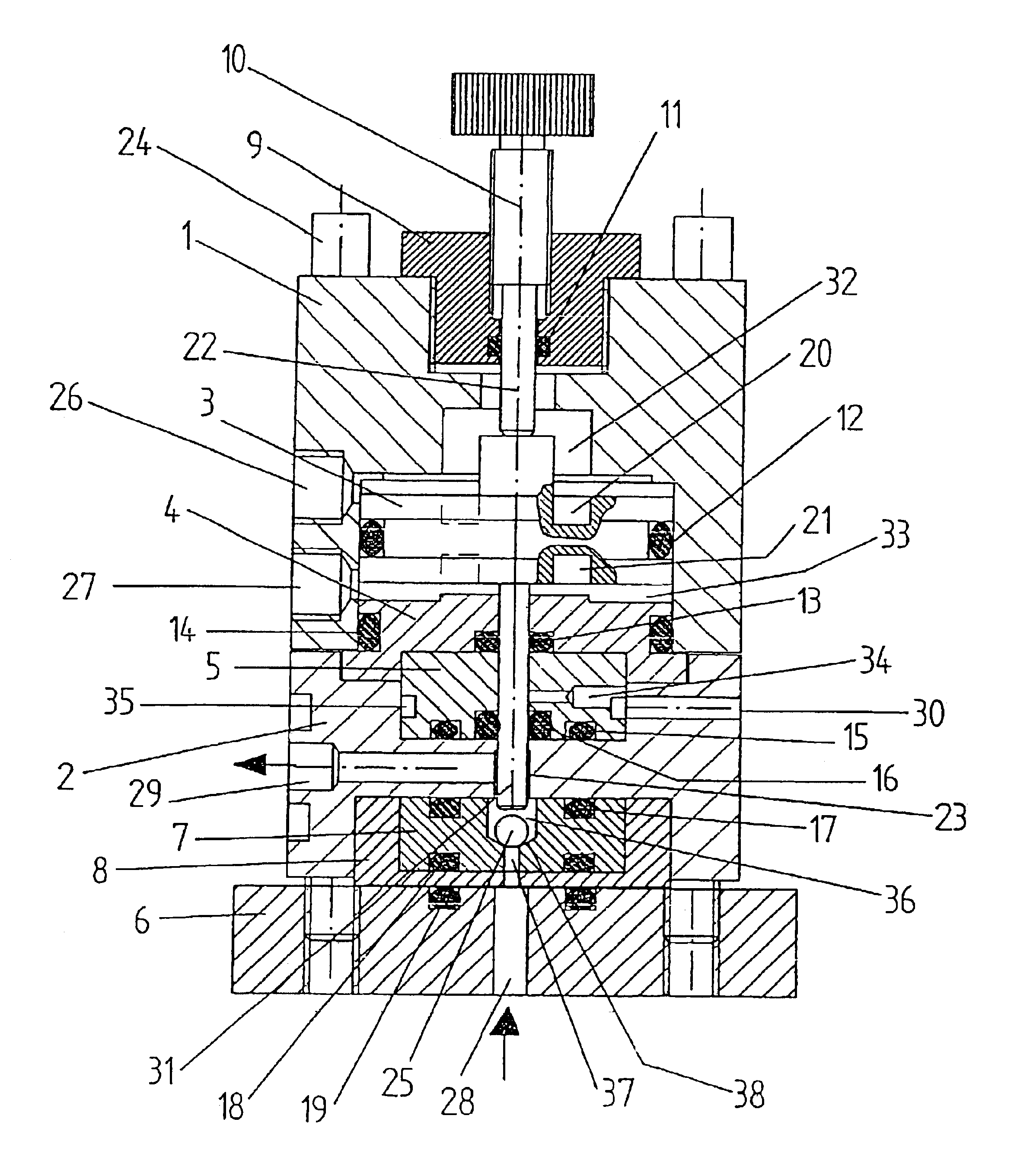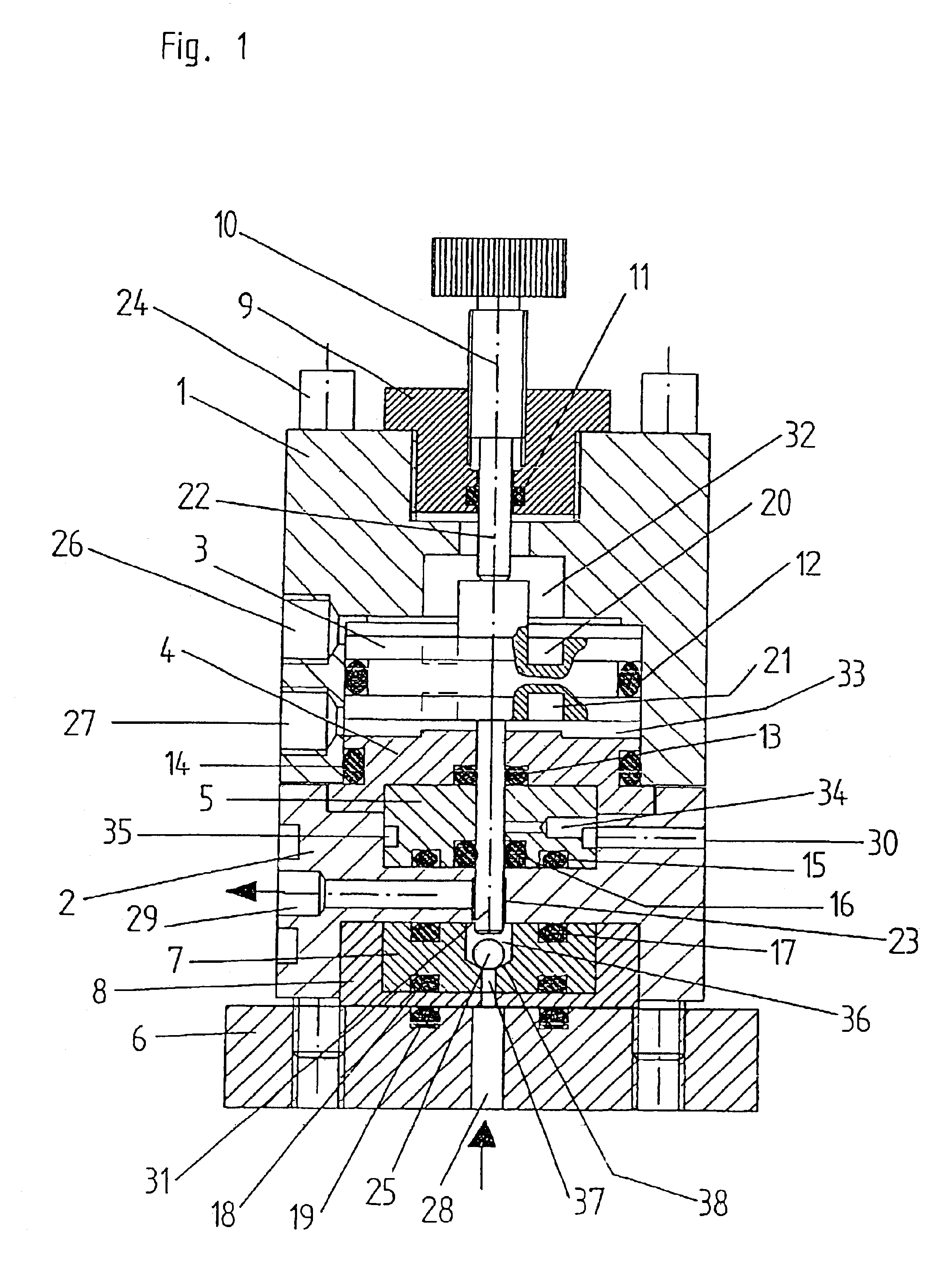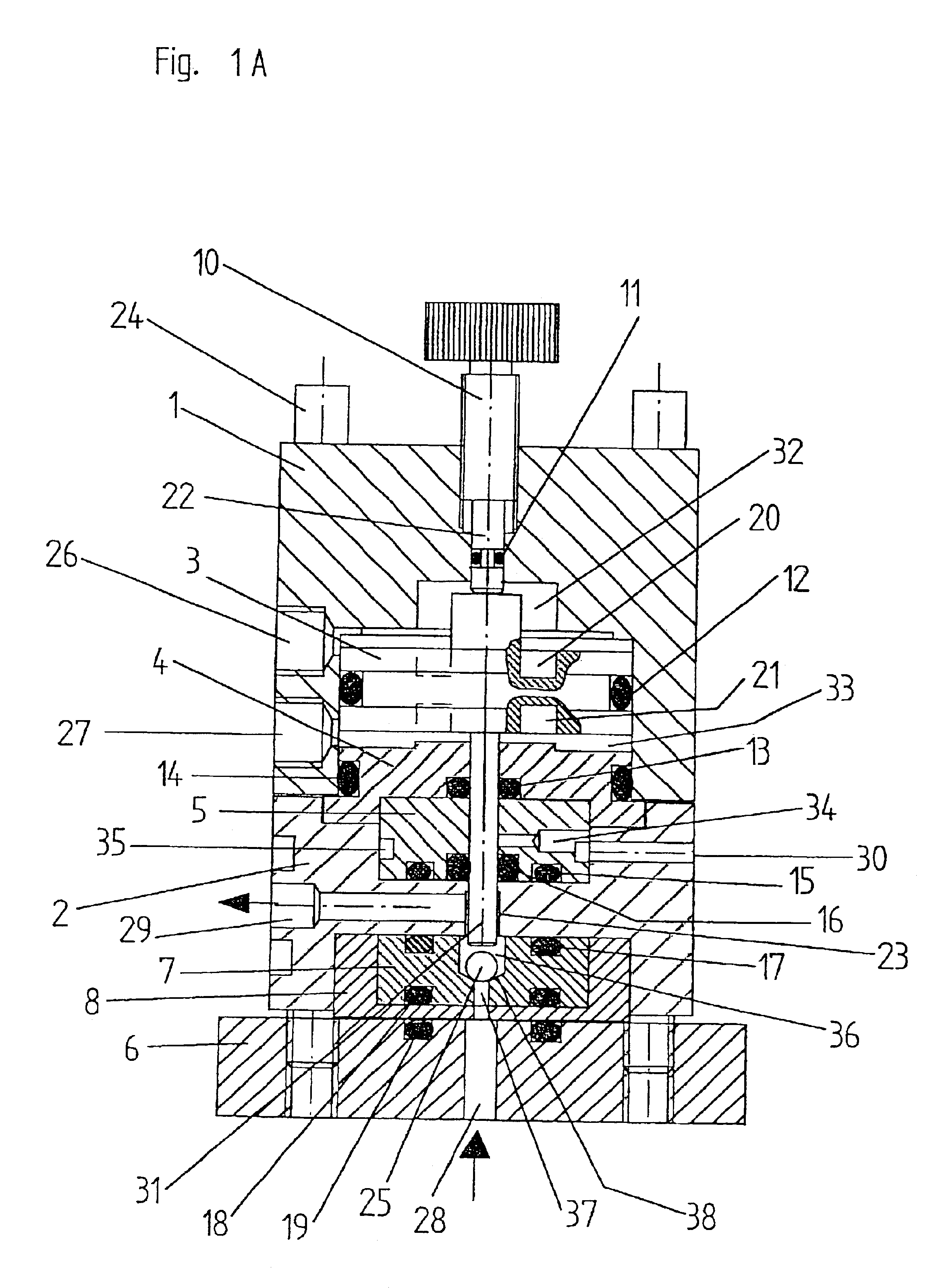Modular, pneumatically operated control valve
a control valve and module technology, applied in the direction of valve details, valve arrangement, spindle sealing, etc., can solve the problems of large actuating drive large actuating drive, etc., to minimize wear on elastic spindle seal, reduce wear on seal, and reduce wear
- Summary
- Abstract
- Description
- Claims
- Application Information
AI Technical Summary
Benefits of technology
Problems solved by technology
Method used
Image
Examples
example 1
[0132]FIG. 1 shows a sectional illustration of a valve with an integrated pneumatic adjusting drive. The valve has three main plates, the head plate 1, the housing plate 2 and the base-plate 6. All the plates are held together, for example, by means of four screws 24, or by bolts, etc.
[0133]The head plate 1 has, inside it, a stepped bore. The bore forms the cavity 32, 33, referred to below as the pneumatic space. The pneumatic space 32, 33 of the head plate 1 provides space for receiving a piston 3 with a valve spindle 31 attached on one side. The piston 3 has, on its circumference, a groove for receiving the elastic piston seal 12. The piston seal 12 and the piston 3 divides the pneumatic space 32, 33 into a lower cavity 33 and an upper cavity 32 (also referred to as the lower and the upper pneumatic space).
[0134]The lower pneumatic space 33 ends with the centering closing plate 4 and is sealed with an associated outer seal 14 to the inner bore of the head plate 1. The piston-spind...
example 2
[0143]FIGS. 2 to 2c illustrate various embodiments of the valve-sealing seat 7 in a valve according to FIG. 1
[0144]FIG. 2 shows the angle α of the conical sealing area 38, the closing body 25 and part of the valve spindle 31
[0145]FIG. 2a shows a version with a conical closing body 25′ and with a centering pin on the valve spindle 31′
[0146]FIG. 2b shows a plate-shaped closing body 25′″ with a centering pin on the valve spindle 31
[0147]FIG. 2c shows a pointed conical closing body 25″ which in the closed state projects predominantly into the feed duct 37 (bore).
example 3
[0148]FIG. 3 shows an alternative valve seat 7′ for a valve according to FIG. 1, with an elastic inner valve-seat seal 42. The freely movable closing body 25″ is in the form of a rotationally symmetrical cylinder stepped on one side and having an attached guide cone. The receiving bore for the closing body 25″ is part of the valve seat 7. If an inner elastic seal is used in the valve seat 7′, the closing body and the valve seat may be made from the same material.
PUM
 Login to View More
Login to View More Abstract
Description
Claims
Application Information
 Login to View More
Login to View More - R&D
- Intellectual Property
- Life Sciences
- Materials
- Tech Scout
- Unparalleled Data Quality
- Higher Quality Content
- 60% Fewer Hallucinations
Browse by: Latest US Patents, China's latest patents, Technical Efficacy Thesaurus, Application Domain, Technology Topic, Popular Technical Reports.
© 2025 PatSnap. All rights reserved.Legal|Privacy policy|Modern Slavery Act Transparency Statement|Sitemap|About US| Contact US: help@patsnap.com



